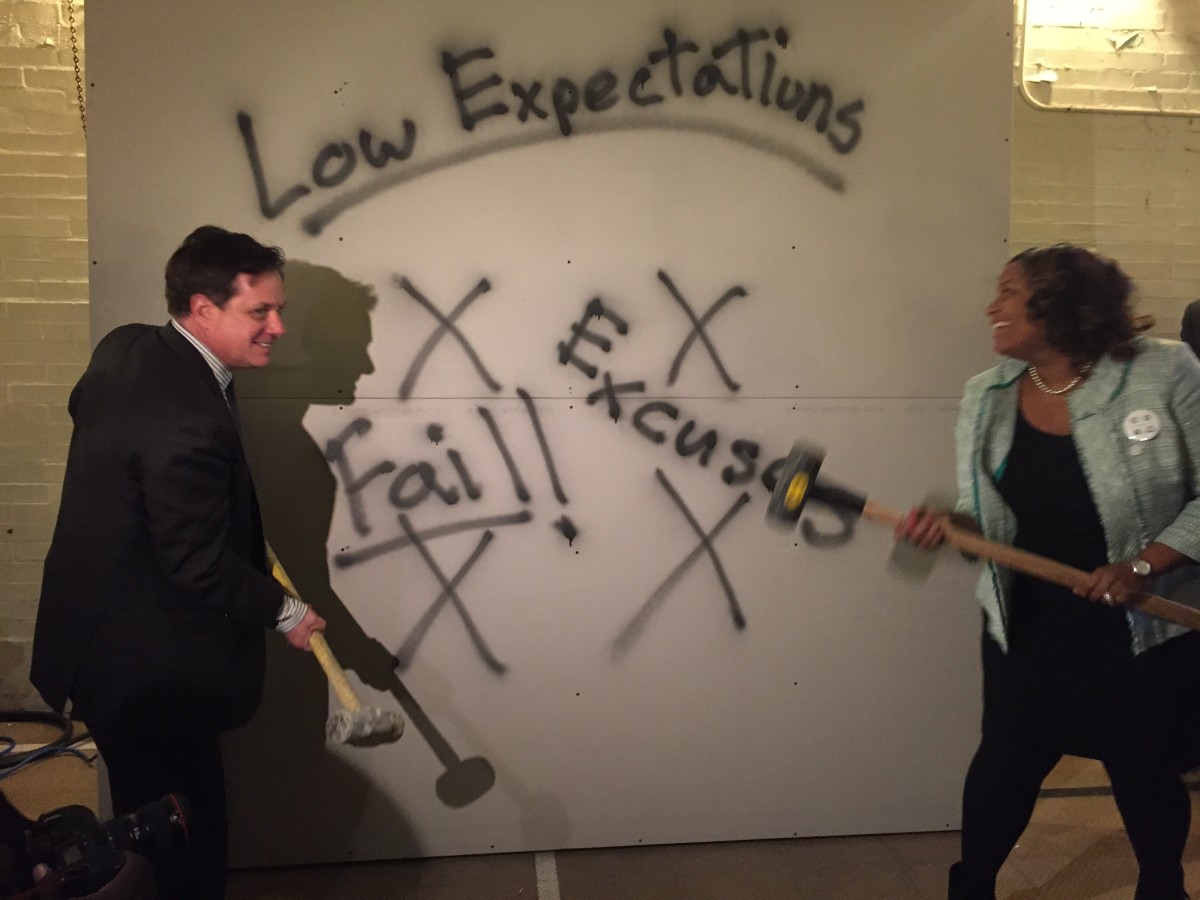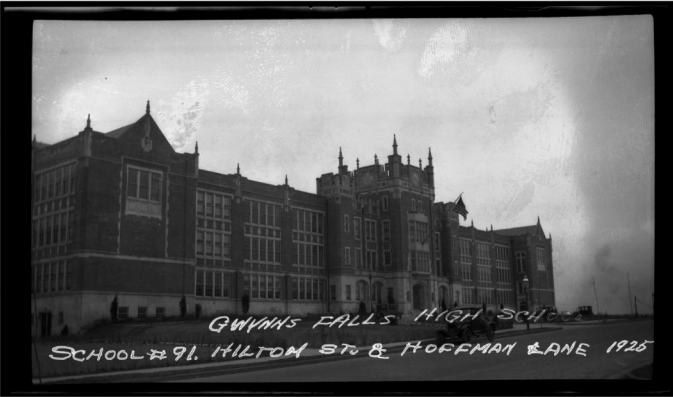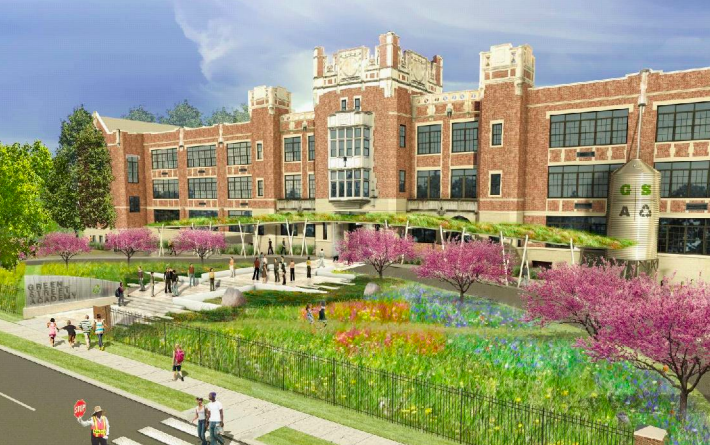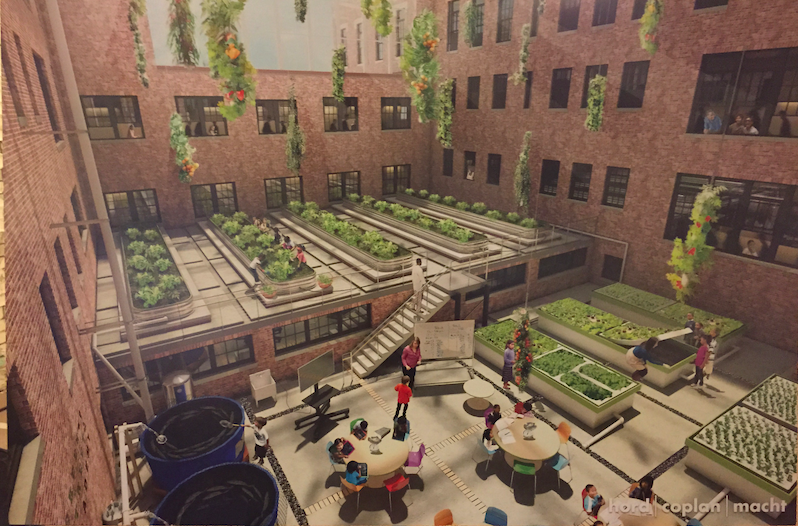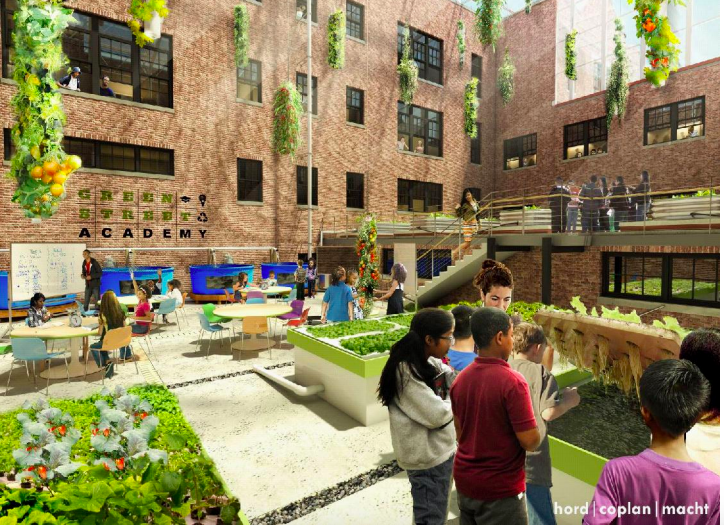When Gwynns Falls High School was built on North Hilton Street in Southwest Baltimore in 1925, it was state of the art. It cost $1.35 million.
“It was the most expensive school in Baltimore,” Jon Constable of Seawall Development said, pointing out architectural details from tongue-and-groove pine flooring to terrazzo hallways. “It’s a fortress.”
But the building hasn’t housed a school since the late ’80s, with only a small portion housing the Kingdom Life Church.
Now, the team of community members and educators behind Green Street Academy are ready to refortify. Construction is underway on a renovation project to turn the building into the public charter school’s new home. Leaders of the sustainability-focused school want it to stand out once again among city schools.
This time, however, the intention is to have the education match the accoutrements.
The school has secured about $20 million to finance the $23 million project. A $14 million loan came from Bank of America Merrill Lynch, which was the bank’s first charter school investment, and more came from private investment.
The school, which serves grades 6-12 and was founded in 2010, is currently co-located with another school at 201 N. Bend Rd. It already has a tilapia farm. That’s already more than most high schools have, but Green Street is aiming for bigger.
The new location will include outdoor classrooms, hanging gardens in the atrium, a chicken coop and a closed loop system to link aquaculture and aquaponics. The new school sits on 8.75 acres. It also backs up to Gwynns Falls, which leaders also envision being woven into class time.
That’s just the outside.
The building itself is 145,000 square feet, nearly doubling the current size. That will provide for 875 students, compared to the current 475. Inside, plans call for breakout rooms with white board walls, and 50,000 square feet of STEM learning space like science labs and technology areas.
The school’s curriculum already includes daily “critical questions” and built-in time for hands-on learning. Students choose from six focus areas, including advanced technology, energy, construction, agriculture/conservation, healthcare and entrepreneurship. In the new building, the vision includes makerspaces and other labs.
“We want our children to see the school as a place of excitement, as a space of innovation,” said Principal Crystal Harden-Lindsey. “And see themselves as part of a movement — the green movement.”
The curriculum is also grounded in a desire to prepare students for jobs. At a groundbreaking ceremony last week, speakers from cofounder David Warnock to a grandparent of two students commented on the need to prepare kids for the “21st century workforce.”
Leaders undoubtedly hope some of those jobs will be in Baltimore. Bank of America Merrill Lynch Senior Vice President Brian Tracey got evidence that the skills students were learning are already being put to use locally. While visiting the school’s current site, he asked students what they did the fish that were grown. He was told the fish are given to Woodberry Kitchen, which is also in a building that the bank helped finance. Tracey described it as a “full circle” moment that allowed him to realize the school’s place in community development.
School leaders are also looking to the community. Leaders plan to invite the community in to use the technology when students aren’t in class. One idea involves sending the kids out as teachers.
Recently, Green Street Academy Executive Director Daniel Schochor applied for a student innovation grant that will train students in Microsoft programs. After they’re trained, they’ll be tasked with going home and teaching members of the community what they’ve learned. The idea plays off the presumption that kids know best about technology.
“We think it’s going to increase community buy-in,” Schochor said.
Instead of just a school, leaders envision Green Street Academy as an “anchor institution in West Baltimore.” The renovation is slated to be completed in time for next school year.
Before you go...
Please consider supporting Technical.ly to keep our independent journalism strong. Unlike most business-focused media outlets, we don’t have a paywall. Instead, we count on your personal and organizational support.
Join our growing Slack community
Join 5,000 tech professionals and entrepreneurs in our community Slack today!

Federal grant freeze fire drill leaves orgs scrambling to brace for Trump-era priorities

As demand for AI infrastructure surges, Johns Hopkins experts warn of deregulation risk

20 entrepreneurship, tech and startup events to fill your February


